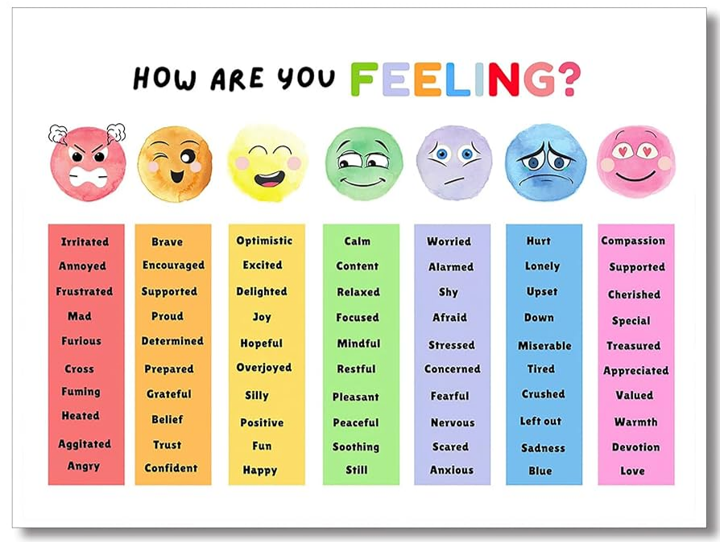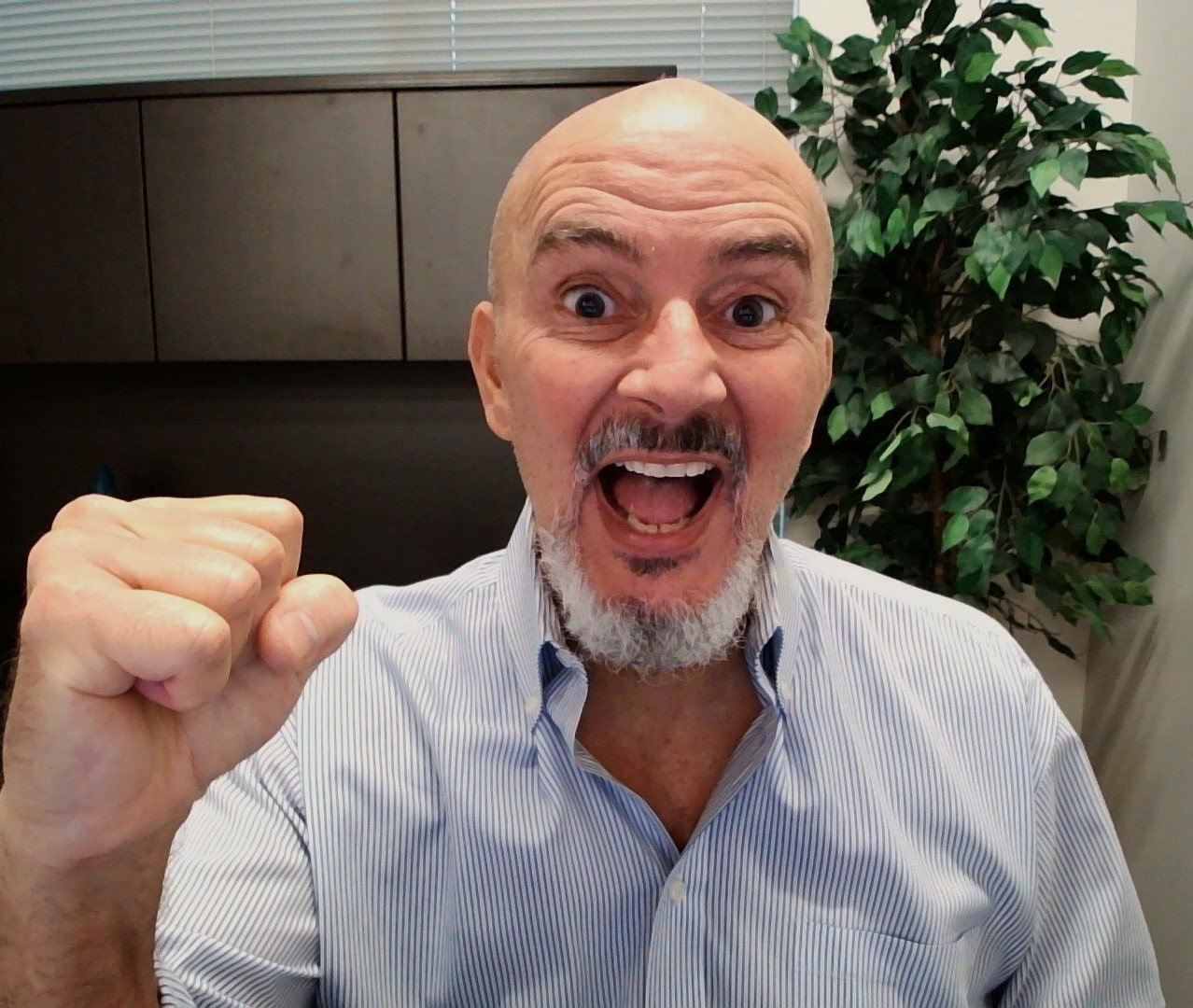October 2025 - Peripheral Thinkers™ Newsletter
October 15, 2025
Hello, Peripheral Thinkers!
What are you planning for 2026? What are you excited about, and what challenges are you bracing for?
After reading several study results about CEO initiatives for 2026, I started thinking about you. (Candidly, I think of you often. Yes, you!)
None of the reports mentioned expanding perspectives or applying insights in innovative ways. The lists of initiatives are rebadged, reactive recipes for mediocrity.
And you are NOT mediocre.
So…
This month, you’ll read what CEOs are planning for in 2026, why their plans may be off, and what you can do differently to make 2026 a banner year.
Hint… Peripheral Thinking skills will play a part.
Let’s jump into the 2026 periphery!
And the Survey Says…
It’s the time of year when companies and organizations review their progress and plan for next year. It is also that time of year when analysts and consulting firms report on the coming year’s priorities. So, I spent a few hours last week reading CEO briefings and survey results as reported by the best and brightest at KPMG, Deloitte, EY, McKinsey, and PwC.
From the list of about a dozen, below are four common issues CEOs are planning for in their 2026 initiatives:
1) Scaling AI
KPMG, Deloitte, EY, McKinsey, and PwC all agree that CEOs plan to scale their investment in and use of AI. Moving from experimentation to measurable ROI. Moving from pilots to cross-functional operating systems. According to KPMG, 71% cite AI as a top investment priority, with 69% planning to allocate 10-20% of their capital budget to AI.
2) Teaming Talent with Tools
CEOs intend to team humans and machines to establish a competitive advantage. In addition to the increased investment in AI tools, PwC notes that companies are also addressing the AI skills shortage by providing more training for their employees and hiring more AI-skilled resources. More CEOs plan to increase headcount than reduce it.
3) Cost Discipline and Growth Investment
EY, Deloitte, and others mention that “efficiency and agility are no longer trade-offs.” They are dual mandates. While most companies stand firm on cost control, ~42% of them plan cost reductions. Overall, M&A activity, alliances, joint ventures, and divestitures are expected to continue. CEOs are positioning their companies for strategic flexibility, treating transformation as a perpetual rather than episodic process.
4) Resilience and Risk Readiness
CEOs internalize volatility as permanent; supply-chain, geopolitical, talent/tools/technology. Akin to “strategic flexibility,” transformation as a continuous discipline is a signal for CEOs in 2026, according to EY. This signal embeds adaptability into operations to better address expected and unexpected disruptions — “executives flag trade-policy shifts as a next-12-months disruptor.” (McKinsey)
How do these topics align with your plans for 2026?
Peripheral Sidebar
Somewhere in the opening paragraphs of each article, report, or study, the author(s) make a statement akin to “In an age of [fill in the blank], companies are…”
In an age of volatility
In an age of uncertainty
In an age of rapid change
In an age of global tension
In an age of profound disruption
How many “Ages” can the business world be in at one time?
I understand the importance of a captivating hook to engage readers. I also understand the psychological safety that comes with following expert advice. However…
In the last 10 years, have you experienced volatility, uncertainty, change, tension, or disruption?
Have people and companies experienced similar things over the last 100 years? How about the last 1,000 years?
Are we so naïve or self-centered to think that the challenges of this current “age” are wholly unique? Are the present obstacles so extreme that human minds have nothing to offer?
End of rant 😉
Concerning and Contradictory Content
I did a little research of my own around these topics, and here’s what I found…
Scaling AI
According to S&P Global Market Intelligence, Gartner, MIT, and RAND Corporation, in 2025, 42% of companies abandoned most of their AI initiatives, a sharp increase from 17% in 2024, with overall AI project failure rates consistently estimated to be between 70% and 95% (depending on what defines a “failed” project).
46% of AI proofs-of-concept were abandoned before reaching production in 2025.
95% of generative AI pilots failed to deliver meaningful financial value.
AI project failure rates are twice that of non-AI technology projects.
What are the reasons given for the failures?
Pilot paralysis
Cost escalation
Talent shortages
Data quality issues
Change management
Lack of clear objectives
C’mon… really?!?!?!
You can cut and paste the reasons into any failed project for the last 50 years.
Teaming Talent with Tools
Pairing humans and machines for a competitive advantage? Hey, now that’s a novel idea (sarcasm intended)! People and machines have been working together since the first humans fashioned tools. And yes, AI is a new kind of tool/machine, but it is not void of human involvement. Humans — our thoughts, ideas, creations, content — inform how and what AI does. If you expect AI to make you bigger, faster, stronger, more powerful… mind your expectations. Nothing of lasting value comes quickly, cheaply, or easily.
Cost Discipline and Growth Investment
When did efficiency and agility become mutually exclusive? Cost discipline and growth investment have been pillars of sound, and dare I say it, innovative organizations since the dawn of time. It is like the laws of gravity. Regardless of how the stock markets react to billion-dollar valuations for companies that have NEVER turned a profit, defy the laws of gravity at your own peril. (OpenAI with a $500 billion valuation on 2025 annualized revenue of $12 billion and a $13.5 billion LOSS in the first 6 months of 2025… or annualized loss of $27 billion.)
Resilience and Risk Readiness
Again, I shake my head. If you have been in business (for-profit, non-profit, public, private) for more than 60 days, you know the need for resilience. You also know there are risks… some seen, some hidden. And you know that “transformation as a continuous discipline” is FAR from an epiphany in October of 2025. Transformation, like breathing, eating, sleeping, and aging, is a continuous process. The fact that some leaders are only now accepting responsibility for their transformation is both encouraging and sad. You can create change or react to someone else’s.
In Short
These survey results represent the collective (homogenized) thoughts of a group of leaders. In all, between 5,000 and 7,000 leaders.
To put that into perspective, there are approximately 550,000 companies in the US alone with annual revenues between $2.5 million and $100 million, and around 200 million companies worldwide.
You don’t need to dismiss the findings outright. You need to consider a variety of inputs and filter them through different perspectives to set your 2026 objectives.
What’s most concerning about the lists of 2026 initiatives is not the pap and bromidic nature of these rebadged topics. It is the glaring absence of interpersonal skills development. It is the lack of unique, human, creative vision.
Without these skills, our personal and professional spheres contract. We think and create with fewer real-life experiences and examples.
Thinking and Creating
So…
Are we losing our ability to think and create for ourselves?
To ask questions and gather information
To filter input through different perspectives
To find answers to questions and then some
To choose a path because it is the right one for us.
To own our uniqueness and acknowledge our sameness
No, I don’t believe we’ve lost our cognitive abilities. I do believe that sometimes it's easier to follow than lead. Sometimes we forget to question best practices. Sometimes, we see what we want to see and apply only the facts without considering intuition or emotion.
Face-to-face, voice-to-voice, real-time interactions with other human beings have slowly decreased. Some point to the technology and the smartphone as the culprit.
In 2014, 53% of the US population had smartphones. In 2023, the global proliferation of smartphones reached 54%.
Other research on the social habits of U.S. adolescents found a slow decline in in-person interactions between 1976 and 2005. After 2012, when smartphones became common, this trend accelerated dramatically
While quantitative data is most readily available for recent decades, earlier sociological work also noted a decline in social connectedness across all ages. In the 1990s, sociologist Robert Putnam documented a drop in civic participation in his book Bowling Alone, observing a reduction in people's involvement in clubs, church groups, and community associations. This suggests the trend began well before the rise of the modern internet.
So what do we do?
Of course, you can begin with the go-to skills for problem-solving, decision-making, and goal-setting. Deciphering. Studying. Surveying. Investigating.
Deciphering’s objective is to understand and simplify complex ideas and concepts. Identify the most potent and reusable elements to ensure you are solving the right problem or building for the right outcome.
Studying’s purpose is to add different perspectives to your references by intentionally exploring unfamiliar subjects and new experiences. Collecting more dots.
Surveying’s objective is to discover new, strategic paths by rising above the noise to see a broader landscape. A landscape that includes terrain your competitors and industry ignore.
Investigating’s purpose is to gain deep, profound clarity on a specific issue, often a pressing challenge. The clarity, aka truth, is the insight that informs robust solutions and approaches that surface-level answers never will.
See the January 2024 newsletter for a more detailed description of Deciphering, and see the September newsletter for information on the other three.
HOWEVER…
Please invest in the following two skills in your 2026 plans:
Discerning Self – recognizing and managing your own feelings and understanding how they affect your behavior and that of others.
Discerning Others – understanding and interpreting the verbal, physical, and emotional reactions of other people.
These Peripheral Thinking skills are part of the “PERCEIVING” Group of skills. The PERCEIVING skills encompass a set of emotional and cognitive skills — Discerning Self, Discerning Others, Empathizing, and Guiding. You’ve likely heard the phrase: “To lead others, you must first lead yourself.” Understanding the human condition, starting with yourself, increases your discerning skills. This journey of discerning what makes you and others similar and unique expands your capacity for empathy. In turn, you gain and strengthen your ability to guide other people.
Peripheral Thinkers™ who invest in the ‘Discerning,’ ‘Empathizing,’ and ‘Guiding’ skills are highly self-aware, read people well, and connect at multiple levels with others. They make great leaders who can build, support, and empower people, teams, and organizations.
Discerning Self:
What It Is: Recognizing your own patterns of thought, bias, instinct, and emotion in the midst of decision-making.
Why It Matters: Peripheral Thinkers can’t observe the world clearly without first understanding what colors their lens.
In Practice:
• Feels like: Knowing when your fear is driving a choice.
• Helps you: Separate signal from ego.
If you aren’t part of a mentoring group or leadership mastermind, 2026 may be the year for that. Finding people who support you, hold you accountable, and model self-discernment is priceless.
In the meantime, before your next meeting, call, or decision, ask yourself:
What am I feeling?
Why am I feeling this way?
How could this feeling influence the [meeting, call, or decision]?
What, if anything, needs to change to make the most out of this meeting/call/decision?
Feelings are real, but they aren’t always reliable for decision-making. 2026 is an ideal time to get to know yourself more deeply.
Have you ever shared great news with a group only to find out they're dealing with something heavy? Knowing how you feel and why will help you begin to sense what others are feeling. “Reading the room.”
Discerning Others
What It Is: Reading beneath the surface in others; listening for beliefs, needs, and mental models they may not articulate.
Why It Matters: Insightful leadership is built upon uncommon interactions and comes from seeing what others don’t yet know they’re revealing.
In Practice:
• Sounds like: “It seems like what you’re really worried about is…”
• Behaves like: Tactical empathy meets strategic intuition.
Most people can understand and interpret others who are like themselves. The key to developing this skill lies in a desire to understand people who are unlike yourself. For this, you need sincere questions and attentive listening.
In my upcoming book, I tell a story about a meeting where a single question opened my eyes to what was most important to a business leader. While I didn’t specifically ask what he was feeling, his feelings, beliefs, and needs emerged during the conversation.
Here’s an excerpt from the book.
A few years back, I was working with a global appliance manufacturer.
They had several software solutions, a Lean Six Sigma operating model, and top-level brand recognition, but slow growth. I spent time with several department heads, then scheduled a 30-minute meet-and-greet with the president.
The guy was sharp: a tailored suit, a long-distance runner’s frame, a firm handshake, and a brain that filtered noise quickly. After a quick recap of my prior conversations, I flipped the script:
“What were you thinking about right before this meeting?”
That opened the door. We got into resource constraints, supply chain strain, and rising raw material prices. And as he talked, something clicked… What his business unit needed most, they already had.
Don’t know how to start a discerning conversation? Here’s a list of questions I pulled from the internet. There’s nothing particularly special about them. Alter them for personal, professional, or random interactions as you see fit.
What’s most important is that you have a genuine interest in learning about the other person(s). Disingenuousness will slam more doors closed than you can ever reopen.
About passions, goals, and values
What are you most passionate about?
What is on your bucket list?
What is a skill you've always wanted to learn?
How do you define success, and how has that definition changed over time?
What is your number one priority for your lifetime?
About personal experiences and memories
What is a childhood memory that has shaped who you are today?
What's the best vacation you've ever had?
What is a belief you once held that you have since outgrown?
What's the best gift you've ever received?
About their personality and perspective
What does happiness mean to you?
What's your ideal way to spend a weekend?
How do you prefer to handle conflicts or disagreements?
Do you consider yourself an introvert or an extrovert?
What’s something that always makes you smile?
Your takeaway
When you add the Discerning Self and Discerning Others skills to your 2026 objectives, the payoff will last far beyond the calendar year. These two skills make Studying and Surveying quicker and easier. It helps you get to the why of Deciphering and to the core of specific issues with Investigating. Better still, the Peripheral Thinking skills collectively improve. The rising tide lifts all boats.
With a deeper understanding of yourself and others, you will see more of what others miss. You will think differently about what is possible. And you will build innovatively by combining unique insights from others.
I’m excited for you and what you’ll accomplish in 2026. I’m SUPER excited about how these two skills will influence 2027, 2030, and beyond.
I’m here to support, encourage, and challenge you. DM any time!
One more thing(s):
Book me to speak at your end-of-year and 2026 events now. Holiday event. End-of-year planning retreat. Annual Sales Kickoff and President's Club event. Let's discuss how we can make your event truly transformational. https://www.pauldanielsjr.com/speaker
Want a second set of eyes on your 2026 plan? Use my contact page and select “Advisory”. https://www.pauldanielsjr.com/contact
Remember, I'm on sabbatical from posting daily on LinkedIn while I finish my book, which is now complete and ready for editing, formatting, and publication. ALMOST THERE!!!
Image Credits: Image Creators
© 2025 Paul Daniels, Jr. and Peripheral Thinkers™











